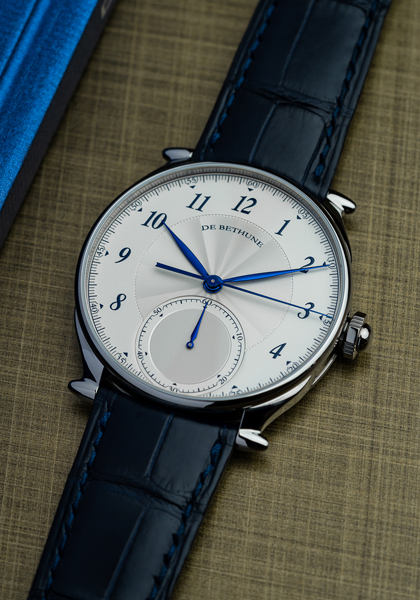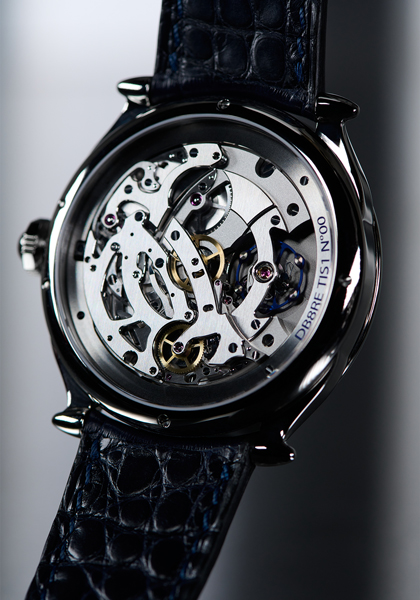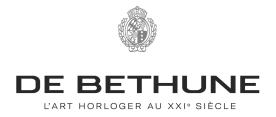What constitutes a “new” watch? Strictly speaking, a watch that introduces some new element, which leaves us none the wiser. A lot of brands play on this minimalist definition to present new watches which, in many instances, come down to a simple change in dial colour or a different strap. Collectors don’t buy into this. For them, “newness” results from a way of thinking, from the movement. In this respect, newness is akin to innovation.
The interstice between “newness” and “innovation” is where you’ll find Denis Flageollet. As Watches and Wonders unfolded in Geneva, the horological brains behind De Bethune delighted in reminding everyone that the “new” DB Eight “isn’t new.”
“Some interesting bits and pieces”
The man is too much of an old hand to let himself get caught up in the debate over what is new, and what isn’t. He is acutely aware of the extraordinary advances made by his maîtres à penser, Passemant, Harrison, Mudge and Lépine, along with other, more contemporary names (François Mercier, Charles Huguenin, Otello and Michel Parmigiani), and is careful as to how he positions himself in their wake, although his genuine modesty doesn’t mean he isn’t conscious of his achievements, dropping into the conversation that “I have come up with two or three interesting bits and pieces.”
The DB Eight is one. Is it new? Not really. A monopusher chronograph isn’t new. In fact the watch’s name is there to remind us that the DB Eight carries on from... the DB8. “It occurred to me that we could do better,” he explains, referring to the original creation which he still regularly wears, in its debut platinum version, more than twenty years after he conceived of it.
So what is better? Well, speaking of platinum, this precious metal bows out in favour of grade 5 titanium. While not intended for extreme conditions, the DB Eight is still of a sporty persuasion and titanium is better suited to that.

Changes to the dial
The dial aesthetics are substantially different. The “sector dial” minute track has gone, replaced by a more open composition without the closed segments. The seconds track, meanwhile, has taken the opposite route and, from open on the DB8, becomes railroad on the DB Eight. The most important change, however, is that the elapsed minutes subdial is now instantaneous and records sixty minutes rather than forty-five.
The guilloché pattern of this minutes counter has also been refreshed, from a radiating sunburst pattern that was starting to feel slightly dated to what more closely resembles a barleycorn motif, and which lends a certain Breguet-like classicism. One final subtlety, which Denis Flageollet clearly enjoys: when the two chronograph hands are reset to zero, the large centre seconds hand exactly overlays the off-centre minutes hand at 6 o’clock. Not an earthshattering change but a subtle detail that, once you see it, seems so obvious you wonder why no-one (apparently) thought of it before. Let us hope this excellent idea carries over to the brand’s future timepieces.

A new-generation movement
As for the movement, De Bethune has made a major modification, as the DB5000 family hands over to the DB3000: De Bethune’s thirty-first in-house calibre – and the fourth monopusher chronograph after the DB1, DB8 and Maxichrono. The minutes counter is now instantaneous (as opposed to trailing) which enables more precise read-off of the elapsed time. Power reserve has been bumped up to 60 hours (from just 36 hours on the first iteration of the DB8), while frequency has increased from 21,600 vph to 28,800 vph. The result is a faster, more precise, hardwearing movement.
The escapement and balance wheel reprise the best of De Bethune calibres, including a titanium balance with white gold weights, a patented flat terminal curve for the balance spring and a silicon escape wheel.






